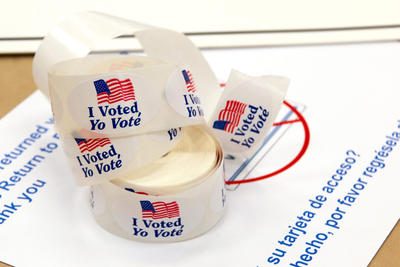
The Presidential Election System
1) The two major Republican and Democrat parties choose their presidential candidate through primary elections held in 50 states. They are organised in various ways from state to state. In some states, candidates are selected through secret ballots, in other states through open meetings, called caucuses. In some states, only registered members of the party that organises the caucus may participate in the caucus, in others, non-members of the party or members of the opponent party may also participate and vote.
2) According to the caucus result, each candidate is assigned a variable number of delegates, who represent their state at the party’s national convention, which selects its presidential candidate. The Convention is attended not only by state delegates but also by super-delegates, important party personalities who can vote for whomever they want, sometimes reversing the situation.
3) A general election is held Once the two parties have chosen their presidential candidates. The voters do not directly elect the President but a Grand Elector representing the nominated candidate.
4) 558 Major Electors are to elect the President of the United States. ITobecome President, it is necessary to obtain the votes of at least 270 of them. Each Great Elector represents the party to which he/she belongs, but the US Constitution does not require him/her to vote for the presidential candidate chosen by his/her party.
5) Each state has a number of Grand Electors, calculated to favour smaller states: sparsely populated Wyoming has one Grand Elector for every 194,000 inhabitants; more populous California has one Grand Elector for every 723,000 inhabitants.
RESULT: This system allows political manoeuvring of all sorts: for example, having members of their party attend and vote for members of the opposing party’s caucus, in such a way as to prevent the election of a particular candidate considered politically dangerous. The assignment of a Grand Elector based on a number of inhabitants changes from state to state and sometimes leads to the Presidency of United States candidates who received fewer votes in the general election.
The Voting Mechanism
1) There is no federal law requiring the identification of voters. The Governor of California, a member of the Democratic party, has introduced a law that prohibits requiring identification of those who show up at polling stations to vote.
2) In the 2020 elections, postal voting increased substantially to over 66 million (up to 28 million in 2016).
3) A 2002 law requires the presence of an electronic voting machine in all polling stations. However, there is no such standard for building a securely usable electronic machine.
4) About a fourth of the voters will vote with machines that issue paper ballots. The remaining ones will vote by electronic machines that store the votes, and may or may not generate a paper record of the vote.
RESULT: This mechanism allows all kinds of fraud. Ballots arriving by mail are opened and recorded by personnel hired through private companies, in those companies there may be people in charge of falsifying the results. Electronic voting machines can be manipulated by loading them with programs that falsify the results. Professor Alex Halderman, who teaches computer science at the University of Michigan, demonstrated it by simulating a vote the electronic machines overturned.
*
Click the share button below to email/forward this article to your friends and colleagues. Follow us on Instagram and Twitter and subscribe to our Telegram Channel. Feel free to repost and share widely Global Research articles.
Don’t Miss Out on Global Research Online e-Books!
This article was originally published in Italian on Grandangolo, Byoblu TV.
Manlio Dinucci, award winning author, geopolitical analyst and geographer, Pisa, Italy. He is a Research Associate of the Centre for Research on Globalization (CRG).
Featured image is licensed under Creative Commons
Comment on Global Research Articles on our Facebook page
Become a Member of Global Research
Source link

